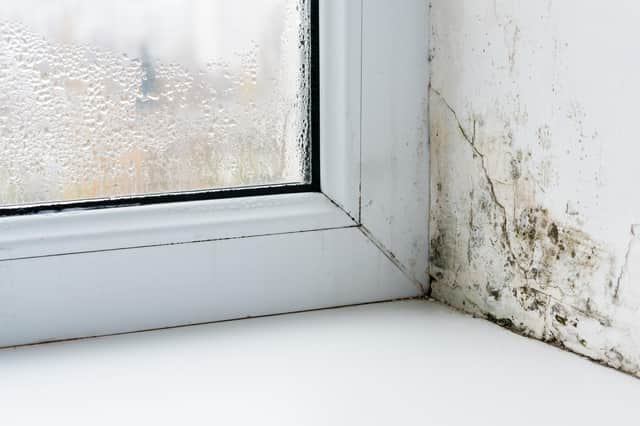Six ways to tackle damp and mould in your home effectively


The cost of fixing damp in a home can vary widely depending on the extent of the problem and the type of solution that is needed.
Some require simple fixes, such as a moisture absorber or improving ventilation, which may be relatively inexpensive. However, if the dampness is due to a more serious issue, such as a leaky roof or foundation problems, the cost can be much higher, and can become a huge health risk for households.It is widely believed that dehumidifiers can prevent damp in the home, but for most homes these are usually a cheap, quick-fix solution to a larger problem.
Advertisement
Hide AdAdvertisement
Hide AdExperts suggest the methods of prevention listed below as most effective, unless it’s for a seaside house or a swimming pool area. These would require a professional dehumidifier.
1 Install a damp-proof course:
A damp-proof course is a layer of material, such as plastic or bitumen, that is installed in the walls of a building to help prevent moisture from rising up through the walls.
2 Fix any leaks or plumbing issues:
Leaks in the roof, walls, or plumbing can allow moisture to enter your home, which can lead to dampness. It's important to fix any leaks or plumbing issues as soon as possible to prevent further damage.


3 Improve ventilation:
Poor ventilation can contribute to dampness in a home, as it can lead to high levels of humidity in the air. You can improve ventilation by opening windows and doors, using exhaust fans, and ensuring an adequate airflow throughout your home.
4 Keep the heating on if possible:
Advertisement
Hide AdAdvertisement
Hide AdCondensation occurs as a result of a surface’s temperature falling below the dew point – in short, cold surfaces in your home are more likely to attract condensation. Keeping the space temperatures to reasonable levels, opening windows and using extractor fans can reduce damp caused by high humidity.
5 Repair or replace damaged or missing roof tiles or shingles:
If your roof is leaking, moisture can enter your home and cause dampness. Repairing or replacing damaged or missing roof tiles or shingles can help prevent leaks and keep your home dry.
6. Use a sealant or waterproofing agent:
Applying a sealant or waterproofing agent to areas that are prone to dampness can help prevent moisture from entering your home.
Advertisement
Hide AdAdvertisement
Hide AdIf the dampness in your home is severe, consider hiring a professional to assess the problem and suggest more permanent solutions.
Home management app Livlet, www.livlet.com recommends the help methods listed above to rid homes of damp and mould. Dasha Klyachko, CEO of Livlet, said: "By connecting and understanding data about our homes, we can save time, money and effort while moving towards a more sustainable future. Automating document filing, uploading bills and storing warranty information is a huge help. "Now technology can go even further. By creating a digital picture of our homes and how we use them, it's possible to predict what maintenance will be required or to anticipate potential system failures, as well as provide a financial overview of the home; where we spend the most money and how we can make savings.”